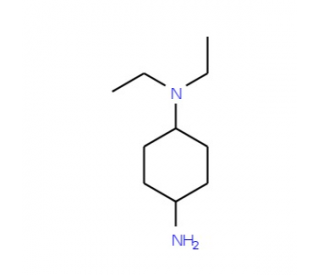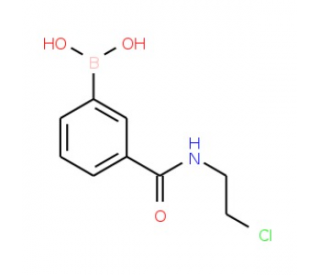详细说明
Species Reactivity
Mouse
Specificity
Detects mouse HVEM/TNFRSF14 in direct ELISAs.
Source
Recombinant Monoclonal Rabbit IgG Clone # 2024B
Purification
Protein A or G purified from cell culture supernatant
Immunogen
Chinese hamster ovary cell line CHO-derived recombinant mouse HVEM/TNFRSF14
Gln39-Val207
Accession # NP_849262Formulation
Supplied as a solution in PBS containing BSA, Glycerol and Sodium Azide. *Small pack size (SP) is supplied as a 0.2 µm filtered solution in PBS.
Label
Unconjugated
Applications
Recommended
ConcentrationSample
Flow Cytometry
0.25 µg/10 6 cells
See below
Please Note: Optimal dilutions should be determined by each laboratory for each application. are available in the Technical Information section on our website.
Data Examples
Flow Cytometry | Detection of HVEM/TNFRSF14 in Mouse Splenocytes by Flow Cytometry. Mouse splenocytes were stained with Rabbit Anti-Mouse HVEM/TNFRSF14 Monoclonal Antibody (Catalog # MAB2516, filled histogram) or isotype control antibody (Catalog # , open histogram), followed by Phycoerythrin-conjugated Anti-Rabbit IgG Secondary Antibody (Catalog # ). View our protocol for . |
Flow Cytometry | Detection of HVEM/TNFRSF14 in CHO Chinese Hamster Cell Line Transfected with Mouse HVEM by Flow Cytometry. CHO Chinese hamster ovary cell line transfected with mouse HVEM was stained with Rabbit Anti-Mouse HVEM/TNFRSF14 Monoclonal Antibody (Catalog # MAB2516, filled histogram) or isotype control antibody (Catalog # , open histogram), followed by Phycoerythrin-conjugated Anti-Rabbit IgG Secondary Antibody (Catalog # ). View our protocol for . |
Preparation and Storage
Shipping
The product is shipped with polar packs. Upon receipt, store it immediately at the temperature recommended below. *Small pack size (SP) is shipped with polar packs. Upon receipt, store it immediately at -20 to -70 °C
Stability & Storage
Use a manual defrost freezer and avoid repeated freeze-thaw cycles.
12 months from date of receipt, -20 to -70 °C, as supplied.
1 month, 2 to 8 °C under sterile conditions after opening.
6 months, -20 to -70 °C under sterile conditions after opening.
Background: HVEM/TNFRSF14
HVEM (herpesvirus entry mediator) is a type I membrane protein that is TNF receptor superfamily member 14 (TNFRSF14) (1). The mouse HVEM cDNA encodes a 275 amino acid (aa) protein. It contains a 36 aa signal peptide, a 170 aa extracellular domain with three cysteine rich domains (CRD), a 24 aa transmembrane region and a 45 aa cytoplasmic tail with a TRAF interaction domain (1). HVEM expression is highest on naïve, memory and regulatory T cells, but declines during T cell activation (2, 3). It is present at low levels on most resting leukocytes (4). HVEM is a receptor for the IGSF member BTLA (B and T lymphocyte attenuator), CD160, and the TNF family ligand LIGHT (lymphotoxins, exhibits inducible expression, and competes with HSV glycoprotein D for HVEM, a receptor expressed by T lymphocytes) (2, 9). HVEM and BTLA are constitutively expressed on T cells, while LIGHT is generally considered to be inducible upon TCR activation. In the absence of activation, HVEM and BTLA interact monomerically, either in cis, or in trans. A same cell (or cis) interaction likely promotes general cell survival, while a between cell (or trans) interaction promotes a state of lymphocyte inactivity through the BTLA cytoplasmic domain. Following T cell activation, LIGHT appears and disrupts existing HVEM-BTLA bonds. A LIGHT-HVEM trimer now forms in trans, initiating HVEM-mediated NF kappa B signaling and a proinflammatory response (10). BTLA and LIGHT interactions are not mutually exclusive, but BTLA appears dominant (4, 6, 7). The herpesvirus envelope glycoprotein gD, which binds HVEM CRD1 to initiate membrane fusion, can antagonize both BTLA and LIGHT binding (1, 6, 7, 9). Human, but not mouse, HVEM can also bind lymphotoxin a within CRD2 3 (9, 11). Graft‑vs‑host disease and Th1 type intestinal inflammation can be ameliorated by interrupting T cell LIGHT/HVEM interactions, while disruption of BTLA/HVEM interaction promotes intestinal inflammation (12-14). Mouse HVEM ECD shares 89% and 53% aa identity with rat and human HVEM, respectively. Mouse HVEM can recognize human BTLA and LIGHT, but human HVEM does not recognize mouse ligands (2, 11).
References:
Hsu, H. et al. (1997) J. Biol. Chem. 272:13471.
Sedy, J.R. et al. (2005) Nat. Immunol. 6:90.
Tao, R. et al. (2008) J. Immunol. 180:6649.
Wang, Y. et al. (2005) J. Clin. Invest. 115:711.
Nelson, C.A. et al. (2008) J. Immunol. 180:940.
Gonzales, L.C. et al. (2005) Proc. Natl. Acad Sci. USA 102:1116.
Compaan, D.M. et al. (2005) J. Biol. Chem. 280:39553.
Cai, G. et al. (2008) Nat. Immunol. 9:176.
Mauri, D.N. et al. (1998) Immunity 8:21.
Ware, C.F. (2008) Immunol. Rev. 223:186.
Bossen, C. et al. (2006) J. Biol. Chem. 281:13964.
Xu, Y. et al. (2007) Blood 109:4097.
Wang, J. et al. (2005) J. Immunol. 174:8173.
Steinberg, M.W. et al. (2008) J. Exp. Med. 205:1463.
Long Name:
Herpesvirus Entry Mediator
Entrez Gene IDs:
8764 (Human); 230979 (Mouse); 102137807 (Cynomolgus Monkey)
Alternate Names:
ATAR; CD270 antigen; CD270; CD40-like protein; Herpes virus entry mediator A; Herpesvirus entry mediator A; HveA; HVEM; HVEMTR2HVEAATAR; LIGHTR; TNFRSF14; tumor necrosis factor receptor superfamily member 14; tumor necrosis factor receptor superfamily, member 14 (herpesvirus entrymediator); Tumor necrosis factor receptor-like 2; tumor necrosis factor receptor-like gene2










 粤公网安备44196802000105号
粤公网安备44196802000105号